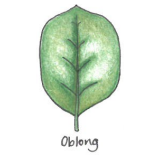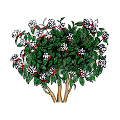Plants by mail order since 1984, over 4100 plants online today
Nursery & Gardens open: Mon - Sat 8:30 - 17:00 & Sun 10:00 - 16:00
Pop up café: open weather dependent
- Shop Now
- Burncoose Specialities
- This Month
- Offers & Promotions
- RHS Chelsea Flower Show 2024
- 40 years at Burncoose
- Engage With Us
- Information, Help & Advice
- About Us & Our Services
- Terms & Conditions
- Log In / Register

PRUNUS laurocerasus 'Otto Luyken'
Commonly known as Cherry laurel, Common laurel
LAURELS
Dwarf cherry laurel
Further Reading....
-
EvergreenNarrow, pointed, dark-green leaves to 11cm (4½in) long.
-
 White
White -
 Height1m (39in)
Height1m (39in) -
 Spread1.5m (5ft)
Spread1.5m (5ft) -
Dwarf shrubTypically only grows to a maximum of one or two feet in height but there will be some exceptions.Upright racemes of small flowers in spring followed by cherry-like red-black berries.
-
HedgeIdeal for hedgingMakes a good low hedge
-
 Hardy - cold winterHardy in most places throughout the UK even in severe winters. May not withstand open/exposed sites or central/northern locations. Plant can withstand temperatures down to -15°C (5°F)
Hardy - cold winterHardy in most places throughout the UK even in severe winters. May not withstand open/exposed sites or central/northern locations. Plant can withstand temperatures down to -15°C (5°F) -
 Full shadeTolerates shade but flowering and fruiting inhibited.
Full shadeTolerates shade but flowering and fruiting inhibited. -
 Full sun
Full sun -
 Partial shade
Partial shade
PRUNUS laurocerasus 'Otto Luyken'
- Details
- Description
- Mature Size
- Tips and Advice
- Goes Well With
- Planting Combinations
- Other Suggestions
- See Also...
-
Additional Features
 Good to knowFrequently flowers again in autumn. Wildlife plant - bees, butterflies, moths.
Good to knowFrequently flowers again in autumn. Wildlife plant - bees, butterflies, moths. Pests & DiseasesGenerally trouble free.
Pests & DiseasesGenerally trouble free. Place of originGarden origin.Resistant to honey fungusThese plants have little or few problems with honey fungus.
Place of originGarden origin.Resistant to honey fungusThese plants have little or few problems with honey fungus. -
Garden Location/ConditionsBorderSuitable for a shrub border
-
HardinessFully hardy
-
Leaf margin
 Serrulate
Serrulate(see photos above) -
Leaf shape
 Oblong
Oblong(see photos above) -
Pruning group
 Pruning group 5Suitable for: Evergreen shrubs that require minimal pruning.
Pruning group 5Suitable for: Evergreen shrubs that require minimal pruning.
Action: Trim or lightly cut back shoots that spoil symmetry. Deadhead regularly.
When: Annually after flowering.
-
Scented PlantsScented flowers
-
Soil ConditionsFertile moist well-drained soil
-
Toxic - Category C
 Harmful if eatenPeople and pets, i.e. cats, dogs, rabbits, rodents
Harmful if eatenPeople and pets, i.e. cats, dogs, rabbits, rodents -
Wildlife
 Bee friendlyButterfly friendlyRabbit Resistant
Bee friendlyButterfly friendlyRabbit Resistant
Jan
Feb
Mar
Apr
May
Jun
Jul
Aug
Sep
Oct
Nov
Dec
Cold weather damage to evergreen plants
Prunus / Laurel - Growing Guide
|
1m (39in)
|

|

|
|
1.5m (5ft) |
Useful extras...

Fertilisers & Feeds - Vitax
Q4 Pelleted Fertiliser
A useful fertiliser suitable for use on a wide variety of plants. Q4 provides all the nutrients and trace elements essential for vigorous growth, abundant flowering and ripening of fruit.
3 options from £6.00

Fertilisers & Feeds - Empathy
Afterplant - Grow Your Own
AFTER PLANT GROW YOUR OWN seaweed is ready to use liquid concentrate that was specially formulated be used on all edible plants.
Only £8.00

Fertilisers & Feeds - Empathy
Afterplant - Tomatoes
AFTER PLANT TOMATO FEED Liquid Concentrate with Bio stimulant is a high potash liquid concentrate containing seaweed extract, plant derived amino acids and other nutrients specifically formulated to benefit tomatoes and greenhouse plants.
Only £8.00

Fertilisers & Feeds - Empathy
Rootgrow mycorrhizal fungi
Recommended by the RHS. Contains Rootgrow™ mycorrhizal fungi. Suitable for all trees and shrubs (except rhododendrons, azaleas, heathers, cranberries and blueberries)
3 options from £3.00

Fertilisers & Feeds - Empathy
Rootgrow Ericoid mycorrhizal fungi
This specially adapted Rootgrow™ mycorrhizal fungi will boost the growth of acid-loving plants like rhododendrons, azaleas, heathers and blueberries.
It contains ericoid and arbuscular mycorrhizal fungi, which are found in poor acidic soils where ericaceous plants naturally grow.
Only £7.50

Fertilisers & Feeds - Empathy
All-purpose Seaweed Stimulant
All-purpose organic concentrated seaweed feed that is a ready to use, derived from sustainable harvested kelp, that can be used on all outdoor and indoor plants, except acid loving plants.
Perfect used in conjunction with Rootgrow™.
Only £7.50




























